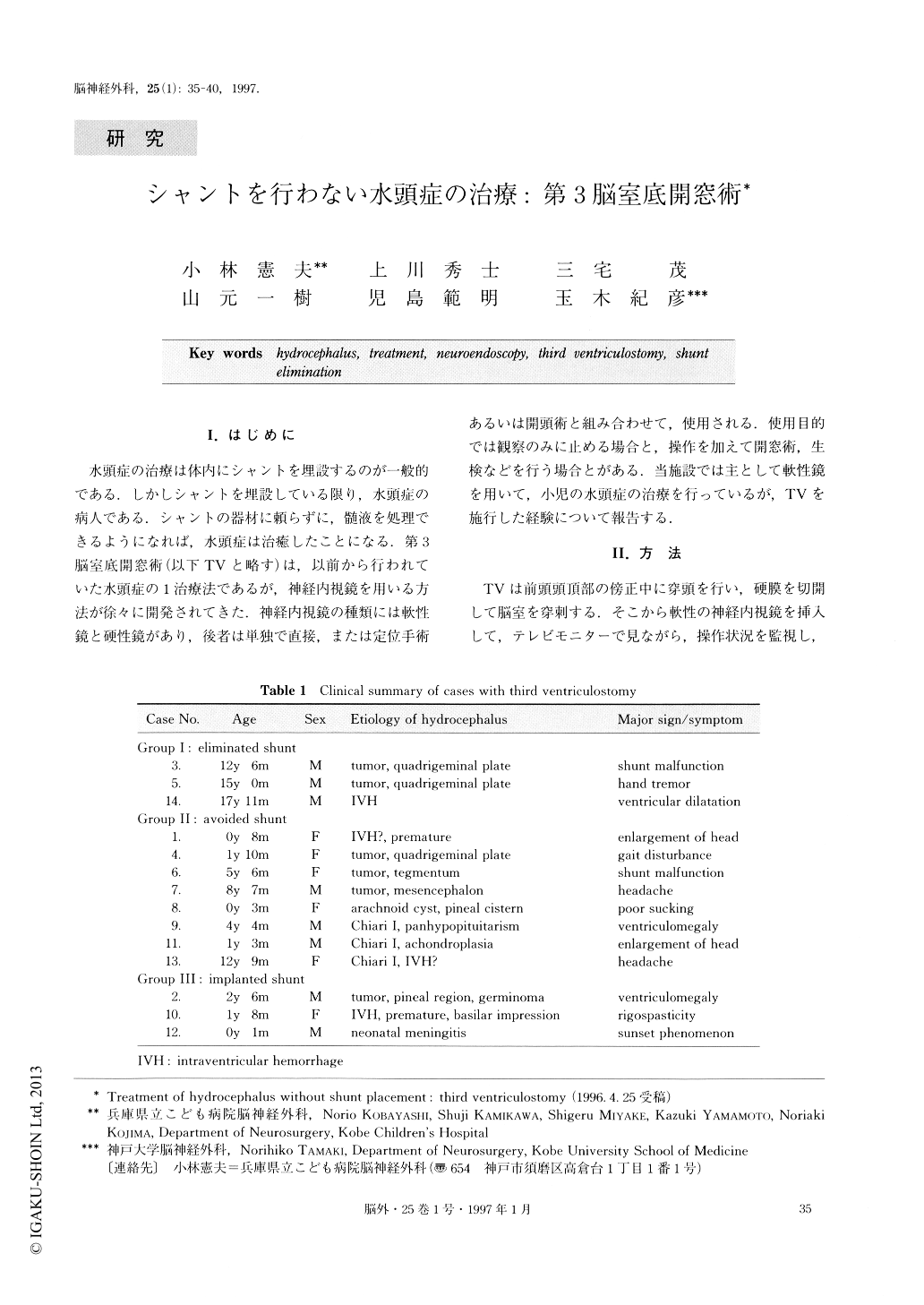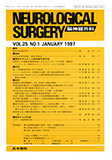Japanese
English
- 有料閲覧
- Abstract 文献概要
- 1ページ目 Look Inside
I.はじめに
水頭症の治療は体内にシャントを埋設するのが一般的である.しかしシャントを埋設している限り,水頭症の病人である.シャントの器材に頼らずに,髄液を処理できるようになれば,水頭症は治癒したことになる.第3脳室底開窓術(以下TVと略す)は,以前から行われていた水頭症の1治療法であるが,神経内視鏡を用いる方法が徐々に開発されてきた.神経内視鏡の種類には軟性鏡と硬性鏡があり,後者は単独で直接,または定位手術あるいは開頭術と組み合わせて,使用される.使用目的では観察のみに止める場合と,操作を加えて開窓術,生検などを行う場合とがある.当施設では主として軟性鏡を用いて,小児の水頭症の治療を行っているが,TVを施行した経験について報告する.
Hydrocephalus is usually treated by placing an ex-tracranial CSF shunt. Endoscopic third ventriculos-tomy, however, has been revived recently as a less in-vasive method for treatment. We intended to avoid shunting or to eliminate the previously placed shunt with this procedure. The authors review their experi-ences on third ventriculostomy employing a flexible neuroendoscope under video monitoring in 14 cases of pediatric hydrocephalus. The result was that we suc-ceeded in 11 cases (79%) by third ventriculostomy alone; we avoided shunting in 8 cases and eliminated a previously placed shunt in 3 cases. Clinical summary isshown on Table 1, and illustrative cases are presented with the figures and legend. The patients' group con-sisted of 8 males and 6 females. Their age ranged from 1 month to 17 years (average age, 6 yr)old. Back-ground diseases of hydrocephalus were brain tumor in 6 cases, Chiari typeⅠmalformation in 3, intraventricu-lar hemorrhage in 3, neonatal meningitis in 1 and arachnoid cyst in 1 case. In the remaining 3 cases, however, we failed to avoid the necessity of placing shunt because of indirect reasons (recurrence of tumor, infection after another operation, subdural fluid collection). There was no major complication in rela-tion to third ventriculostomy, except for a moderate elevation of temperature of several days' duration fol-lowing the procedure. Indication and outcome of this operation is also discussed. Endoscopic third ventricu-lostomy is an efficacious procedure for the treatment of hydrocephalus in selected patients.

Copyright © 1997, Igaku-Shoin Ltd. All rights reserved.


